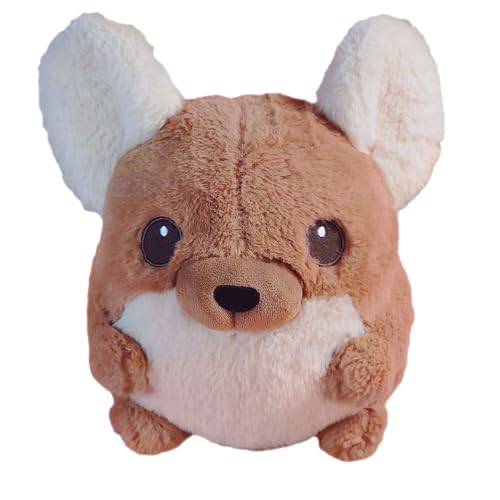Good example of different lines/strains of chinchillas. I've never run into this as it has been the opposite in the Pacific Northwest with the narrower jawline having the tendency to malocclude.
Ah, interesting, I wondered if it might be a different lines thing, definitely the sort of thing breeders need to watch out for, I guess.

)
thinking about some of the dog comments about breeding for different physical characteristics....So then where would dwarves, angoras etc. fit in with the idea of quality breeding? Clearly in the attempts to produce these chins there will be chins that are not normal in the sense of a traditional chin, (possibly ugly, small, and unable to perform well in shows) and a limited gene pool to work with. So if these attempts produce poor quality chins that aren't quite dwarves or arent quite angoras, is that considered acceptable? (Just taking this discussion a different way, no plans for any of this personally!)
That's an interesting point. Hmm, from chinchillas.com, it seems that the main line of dwarfs is a recessive, carriers being normal size. The dwarf females apparently can have littering problems, understandably (that would put me off, tbh, I feel like true dwarfism isn't a good trait to aim for, but would have to know more about the line I guess), so it's the males and carrier females that are bred. With the angoras, it seems some angora carriers have longer hair than usual, which would probably mean they wouldn't show well, though that's maybe similar to breeding for Sapphires and Violets, I know some breeders have said that Standard carriers of these recessives don't always seem to do so well when shown, but of course they're still important for a breeding program. Mish also has mentioned in this thread that her lighter Standards are good for pairing with Saphs, but don't do so well on the show table. It's a bit different from the dogs, as in them breeders are deliberately aiming to produce physical characteristics, for instance, a shorter muzzle, despite knowing that that characteristic will cause health problems, ie. interfere with breathing (they don't want to accept this is the case, of course). If, say, the locken chins turned out to be really prone to skin problems due to not having the coat to protect the skin, that would be more similar, or if the rounded heads in chins actually did lead to more frequent occurrences of malo., as it does in rabbits, particularly dwarf lops (though as Spoof says, in chins seems that's just a certain line, so not necessarily connected to the physical characteristic as such).
All the mutations (the Tower Beige was mentioned to me as an example?) I think haven't been so strong initially, health wise and in terms of show qualities, so I don't think the angoras are any different there. It does potentially fit with the idea of breeding for quality, as responsible breeders working with these mutations will of course try to improve the health as well as show qualities of the mutations (and I do think a show standard for evaluating angoras and lockens will be probably worked out eventually, will be interesting to see what happens there anyway). It isn't working to improve the species as a whole, because the species doesn't particularly need to be long haired, curly haired...or white, beige, black etc. (makes for rubbish camouflage!). It's for the benefit of humans who are interested to see something different, same in any domesticated species, the best breeders can do is make sure that preserving that something different isn't at the expense of the animal's health.
Of course, there are breeders who will just breed them for profit, same with breeders who only care about breeding 'pretty coloured' mutation chins that will sell for more (especially the mosaic advertised as 'rare colour!!!

) and don't use any standards. Doesn't mean it's intrinsically the fault of the mutation itself. In breeding any chins you're going to end up some that weren't what you were hoping for (even just with ebonies, I really admire the patience of anyone who keeps aiming for a showable 'every hair shiny black' eb, hah).
If there's a clear link between a specific health problem and a new mutation, I don't feel it should be bred unless it's something that can be bred out without resulting in a great many chins with health problems along the way.

























![Evergreen Pet Supplies [16 Cups] Small Pets & Bunny Stacking Cups – for Rabbits & Chinchillas - Guinea Pig - Colorful Wheat Straw Rabbit - Graduated Sized Stackable for Rabbits](https://m.media-amazon.com/images/I/51v+rnxcu+L._SL500_.jpg)





















